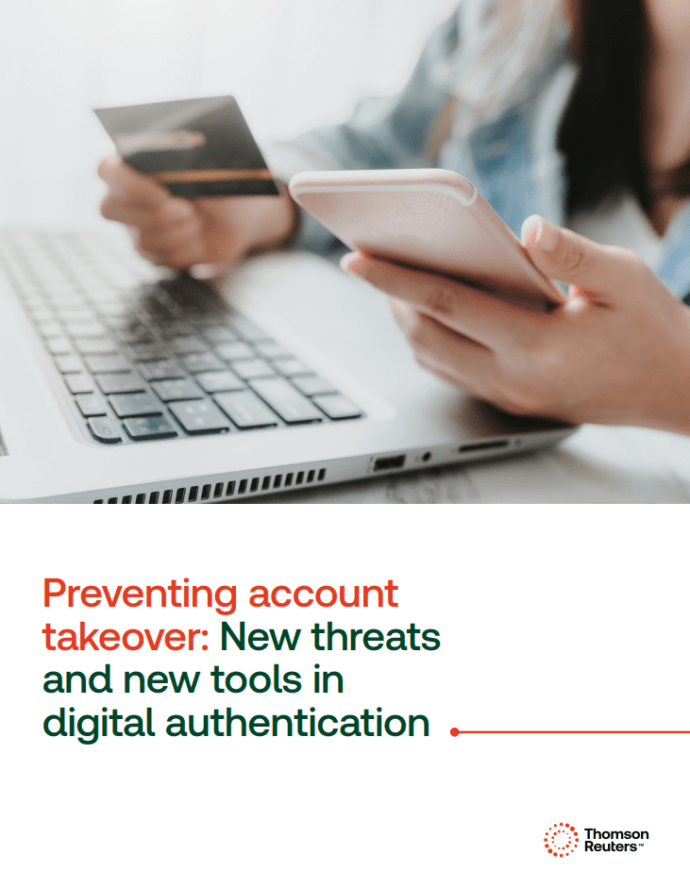← Blog home
In the digital age, the shift from in-person interactions to online engagements has not only streamlined processes but also opened opportunities for fraudsters, particularly through account takeovers. A staggering three-quarters of U.S. adults have fallen victim to identity theft at least once, underscoring the critical need to grasp the full scope of this burgeoning issue of identity fraud.
What is identity theft and fraud?
Identity theft, a subset of identity fraud, specifically refers to the act of stealing someone’s personal or financial information to commit fraud. Identity theft can occur through various methods employed by fraudsters such as phishing, physical theft, data breaches, skimming, or even social media scouting.
One common tactic is phishing, where fake emails or texts are sent pretending to be from legitimate institutions, tricking individuals into providing personal information. Physical theft is also prevalent, involving the stealing of wallets, purses, or mail to obtain credit cards, bank statements, or identification cards. Another method is exploiting security vulnerabilities in organizations’ databases through data breaches, allowing unauthorized access to large amounts of personal data.
Identity fraud involves the unauthorized use of a person’s credentials to carry out fraudulent activities, often without the knowledge or permission of the individual. This type of fraud can manifest in various forms, including the misuse of personal information to open new accounts, make purchases, or gain financial advantages.
Historical and modern challenges of identity fraud
Identity fraud is not a novel concept; it has merely evolved with technological advancements. Historically, tactics like document forgery and social engineering were prevalent, with fraudsters manipulating personal interactions or falsifying documents to gain financial advantages. Today, these methods have transitioned into the digital realm, manifesting as phishing attacks and credential stuffing, where large volumes of stolen credentials are used to breach multiple accounts.
This evolution reflects a significant shift in how identity theft is growing and perpetrated. Previously, fraud was often a one-time event affecting a single aspect of an individual’s life, such as credit card fraud, which is typically quickly detected and rectified by financial institutions. However, modern digital techniques can have far-reaching effects, enabling fraudsters to hijack entire digital identities, leading to prolonged and recurring consequences for victims.
The impact of identity theft
The repercussions of identity theft extend beyond the immediate financial losses, which, as of 2023, have escalated to a staggering $10 billion annually in the U.S. alone. The emotional and psychological toll on victims is profound, as they grapple with the violation of their personal life and the ongoing fear of recurrence. The process of recovering one’s identity due to fraud can be lengthy and complex, often taking weeks or months to regain control over personal accounts. Surprisingly, less than half of the victims seek legal recourse, which could be attributed to the daunting nature of the legal processes involved or a lack of awareness about available legal options.
The broader economic impact is equally severe, with global fraud losses projected to exceed $485 billion in 2023. These figures highlight the problem’s scale and the pressing need for effective fraud prevention strategies. The continuous rise in identity theft cases has prompted an increase in public and private sector efforts to combat this issue. However, the challenge remains significant, with many incidents going unreported, which further complicates efforts to fully understand and address the landscape of digital fraud.
Understanding the landscape of digital identity theft and fraud is crucial in today’s interconnected world. As fraudsters continue to exploit digital advancements, the need for robust security measures has become imperative. By staying informed about the latest trends and technologies in fraud prevention, individuals and institutions can better protect themselves and their stakeholders from the perils of digital identity theft. The journey to a more secure digital environment is ongoing, and it requires the collective effort of all parties involved to navigate the challenges and mitigate the risks associated with digital interactions.
 |









